Introduction to Autoencoders Autoencoders are a class of neural networks that aim to learn efficient representations of input data by encoding and then reconstructing it. They comprise two main parts: the encoder, which compresses the input data into a latent representation, and the decoder, which reconstructs…
Pascal Bornet, Author of IRREPLACEABLE & Intelligent Automation – Interview Series
Pascal Bornet is a pioneer in Intelligent Automation (IA) and the author of the best-seller book “Intelligent Automation.” He is regularly ranked as one of the top 10 global experts in Artificial Intelligence and Automation. He is a member of the Forbes Technology Council. Bornet is…
Gradient’s AI: Revolutionizing enterprise automation for all industries
Gradient revolutionizes enterprise AI automation across industries, enhancing efficiency, compliance, and productivity with domain-specific models….
Embracer Shuts Down Developer Of The New Alone In The Dark
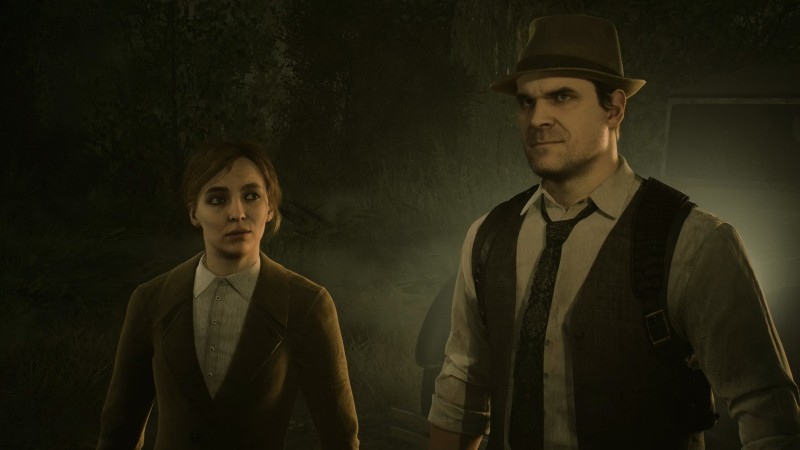
Embracer has shut down Pieces Interactive, the developer of the Alone in the Dark reimagining that arrived earlier this year. The studio is the latest to be closed by the troubled company over the last 10 months.
Pieces Interactive’s website now only features a graphic listing “2007-2024 Thanks For Playing With Us” and a short blurb detailing its history:
Pieces Interactive released over ten titles on PC, Console and Mobile since 2007, both our own concepts such as Puzzlegeddon, Fret Nice, Leviathan Warships, Robo Surf and Kill to Collect, as well as work for hire titles such as Magicka 2 and several DLCs for Magicka. Our client list includes Paradox Interactive, Koei Tecmo, Arrowhead Game Studios, Koch Media and RaceRoom Entertainment.
In 2017, Pieces Interactive were acquired by Embracer Group after working with the expansion for Titan Quest, Titan Quest: Ragnarök and third expansion for Titan Quest, Titan Quest: Atlantis.
Our last release was the reimagening of Alone in the Dark.
Alone in the Dark launched on March 20 to mixed reviews, currently sitting at a 63 on Metacritic. The game stars actors Jodie Comer and David Harbour, who lent their voices and likenesses, in a third-person reimagining of the 1992 survival horror classic.
[embedded content]
Following the collapse of a $2 billion deal with the Saudi Arabia-backed Savvy Games Group in 2023, Embracer has undergone a massive restructuring to stay afloat, resulting in a significant reduction of headcount across its many studios. That has included laying off over 1,000 employees (including those at Eidos-Montreal), selling off its studios (Saber Interactive, Gearbox Entertainment), and outright closing others (Free Radical Design, Volition Games). Embracer has most recently split itself into three separate companies, with its studios divided among them.
Monster Hunter Wilds Preview – The Chase Is On – Game Informer
Monster Hunter is known for its protagonists overcoming seemingly insurmountable odds in their pursuit of taking down the massive monsters that populate the region, but with Monster Hunter Wilds, Capcom may be taking it to a whole new level. While at Summer Game Fest Play Days, I took in an extended gameplay demo involving an Alpha Monster hunt. I left the demo excited to dive into this seemingly improved take on what the very popular Monster Hunter World delivered in 2018.
Monster Hunter World served as Capcom’s big push into making a more mainstream and globally appealing entry in the franchise. The team worked hard to bring the franchise up to global triple-A standards and included several quality-of-life improvements, as well as a simultaneous ship date across Japanese and Western markets and additional language localizations. The result was a smash success, with Monster Hunter World currently sitting atop the franchise’s sales charts. Capcom and the Monster Hunter development team hope to go even bigger with Wilds.
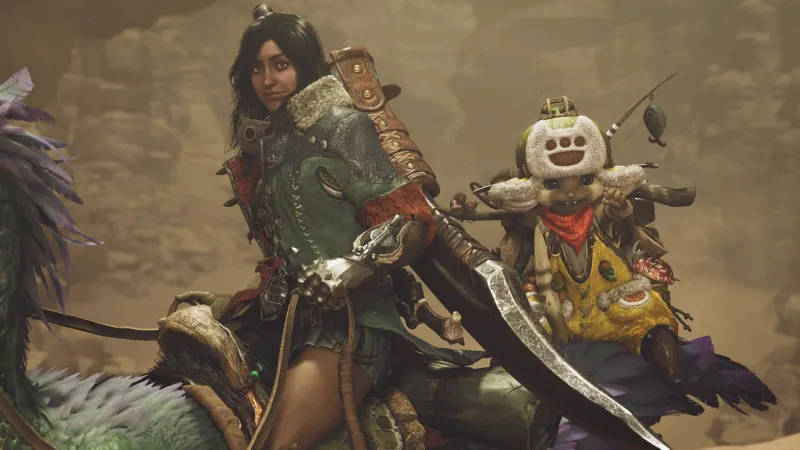
“For Monster Hunter Wilds, it’s pretty much a similar approach to what we have accomplished with World in that we want to use what were then the most high-spec machines available to create the world of Monster Hunter in unprecedented detail and depth,” series producer Ryozo Tsujimoto says. “That was true for Monster Hunter World, and for Monster Hunter Wilds, it’s the same approach, but now, hardware has advanced so much in the intervening years that we’re just able to go even further than we did in that direction.”
From the start of the demo, the graphical enhancements are obvious. The lush environments, improved animations, and better faces are immediately evident as the on-screen character walks through the base camp populated with humans and Palico, but once the character hops on his mount (which are larger this time around), Wilds really starts cooking with gas.

A new tool that allows players to pick up items from a distance while riding a mount is just the start, as we have our eyes on hunting an Alpha Doshaguma. Venturing out into the eponymous wilds from base camp requires no load screen, and thanks to the day/night cycle, players must be intentional about when they start their hunts since certain monsters only appear at specific times. Because of this, the character must wait for prime Doshaguma hunting hours, so he asks his Palico friends to set up a mobile camp in the field. These camps are extremely handy, but they can be destroyed by monsters, so you must be strategic about your placement.
Before the hunt, the character cooks a meal via an extended cooking sequence that is, in the words of the demo’s commentator, quite sensual. The detailed food looks terrific, and the character’s facial expressions and sounds seem to reflect that it tastes as good as it looks. After feasting, the hunter is off to find the Doshaguma. Using the Ghille Mantle, the hunter sneaks right past the standard monsters and right up to the Alpha. He lands a heavy blow, and all chaos breaks loose. The giant bear-like monster alerts all its buddies, and they swarm the hunter in the enclosed space.
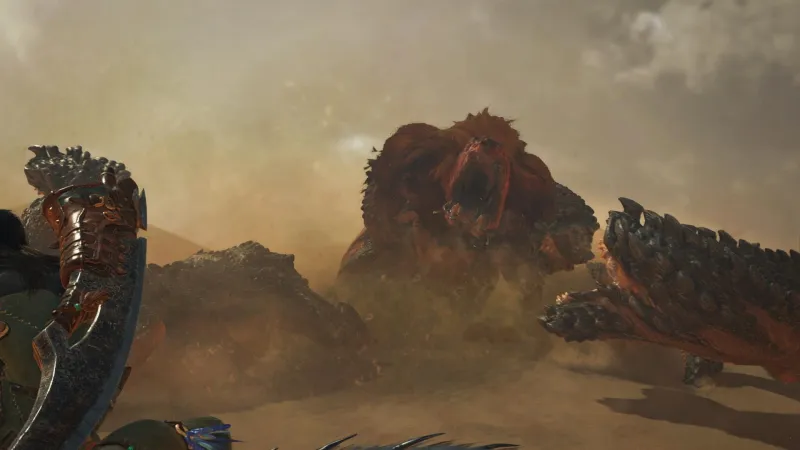
The only way the hunter is going to survive this is by trying to thin the herd, but that’s not going to happen in this tight space. The hunter calls upon his mount and makes a break for it. The four congregated monsters give chase. While they’re hot on your tail, you have ways to slow them down or even take them out of the fight. You can lead them through Bramble or even other monsters’ territory. In this case, the demo player leads them right through a pack of smaller monsters who don’t hesitate to jump up on the four Doshaguma. This slows them down, but two stay on the hunter’s trail.
After a few more maneuvers, the hunter loses all of the Doshaguma except the Alpha target. Now it’s time to lead it through even more traps in hopes of slowing it down and landing some damage. First, the hunter leads them through Balahara territory, which results in the Balahara opening up a quicksand trap that sucks the Doshaguma into it. The bear-like monster escapes, so the hunter enters a nearby thunderstorm. There, the area’s Apex monster appears and attacks the Doshaguma but does not finish it off. The hunter then rides into a nearby cave where boulders crash onto the monster from the ceiling.
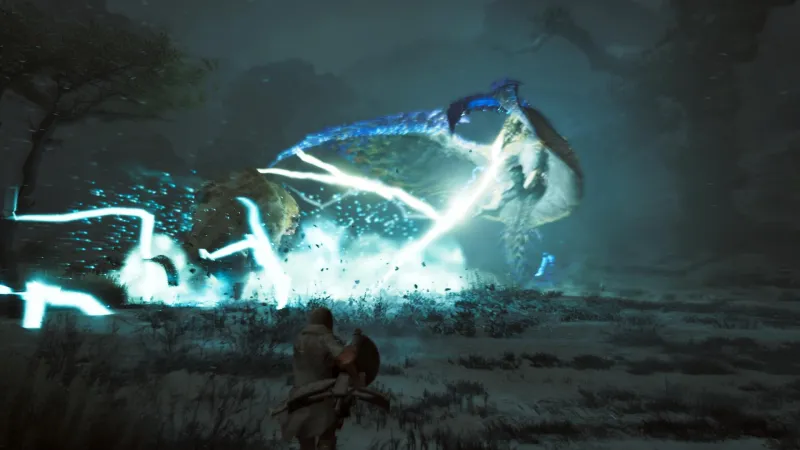
It’s obvious that having knowledge of the map will pay dividends as you fight a powerful monster like this Alpha Doshaguma. “With the maps being so much bigger now – two times or more as large as Monster Hunter World – being completely seamless, my approach is to give the player as wide a toolset as possible and place these things so that they can make a choice on what kind of strategy they want to take,” director Yuya Tokuda says. “This is a game you can play for dozens or hundreds of hours, and even though it’s very big, you will see the same field so many times, and I don’t want it to feel static, but we always have our, ‘I know that if I go here, this is what happens. That’s option A, and there’s also option B: The way the field actually changes with the daylight cycle and extreme weather system means that you are always able to, ‘Okay, well now that it’s this time of day, if I go here, I know that [a particular monster] will be available for me to track. Or for the next time when it’s a different time of day or different weather option, we’ve provided the information to let you decide how to take it differently this time. You can go through your old favorite strategies or just decide to change it up on a whim. I feel my job as the director or the designer is to give you the tools you need to hunt. How you use them is really up to you.”
To prevent players from feeling overwhelmed by the options available to them, the Palico, who can talk this time around, will call things out to ensure the player is aware of what is at their fingertips. “They will call out these things just to make you aware of them, but it doesn’t force you to do them,” Tokuda says. “So, if there’s a storm coming in, then one of the characters might tell you to watch out for that. […] I just want to ensure that the players don’t miss out on all the exciting new features we added because they didn’t know what to look out for.”

After the chase through the cave, the Alpha Doshaguma begins limping, but the hunter also needs to rest, so he lets the monster escape. The hunter returns to the mobile camp, changes to a long sword, and sends up a signal flare to call co-op partners. Together, they set up traps in the area where the monster roams. One hunter lays a pitfall trap while the others prepare their own ways. Once ready, our main hunter sneaks up on the Doshaguma and sets up explosive barrels near where it’s sleeping. The hunter blasts the barrels, and they explode, serving as the rudest alarm clock. It wakes up, understandably irritated, and chases the hunters once more. The main hunter leads it into the pitfall trap, where it gets wedged in the ground, and the team unloads on the already-injured beast. The Doshaguma climbs out, but the main hunter jumps on its back, grabs its mane, and begins stabbing it from the top. Thanks to this maneuver, the pre-existing injuries from the thrilling chase, and the teamwork from the co-op partners, the Alpha Doshaguma finally falls, and the hunters use the carving knife to cut the carcass. The entire sequence was white-knuckled, breathless, and edge-of-my-seat thrilling, and I can’t wait to undertake similar chases once I have the game in my possession.
When Monster Hunter World arrived in 2018, I was excited to finally give the series a shot. I liked what I played, but I didn’t make it very far into the campaign. After leaving my Monster Hunter Wilds demo and speaking with the creators, I am ready to download World and its Iceborne expansion in anticipation of Monster Hunter Wilds’ 2025 release.
NVIDIA presents latest advancements in visual AI
NVIDIA researchers are presenting new visual generative AI models and techniques at the Computer Vision and Pattern Recognition (CVPR) conference this week in Seattle. The advancements span areas like custom image generation, 3D scene editing, visual language understanding, and autonomous vehicle perception. “Artificial intelligence, and generative…
The A Quiet Place Game Breaks Its Silence With First Reveal Trailer
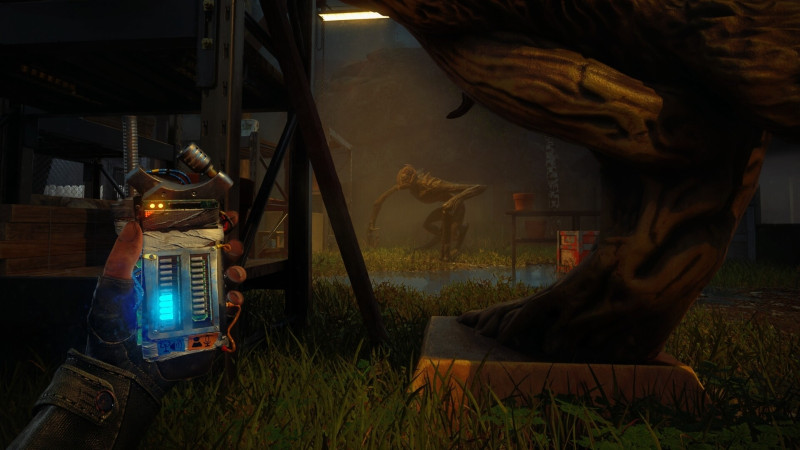
Fans of the A Quiet Place films may remember that a video game based on the franchise was announced almost three years ago. After years of worrying yet oddly appropriate silence, publisher Saber Interactive has revealed the title and first trailer for A Quiet Place: The Road Ahead.
The first-person adventure is an original story starring a young woman who must trek across a new area of the film’s post-apocalyptic landscape for unknown reasons (though the game’s description mentions she’s dealing with some kind of family drama). Like the movies, keeping quiet to avoid the wrath of the sound-sensitive alien invaders requires using tools such as a customized microphone that measures the sound levels in an area.
[embedded content]
Stealth is key, and players must carefully observe environments to create their own paths while avoiding noise-making hazards such as stepping on broken glass, as seen in the video. The trailer didn’t show any combat, but if it’s anything like the films, guns are likely to be present but perhaps deemphasized (they’re quite loud, you see).
Interestingly, A Quiet Place: The Road Ahead seems to have switched developers. When the game was first announced, Illogika was at the helm. Now, the game credits Stormind Games, the team behind the Remothered horror series and, most recently, Batora: Lost Haven.
A Quiet Place: The Road Ahead was originally slated to launch in 2022, the same year A Quiet Place Part II hit theaters. With this trailer arriving ahead of the June 28 premiere of A Quiet Place: Day One, the game is again riding the momentum of a new film release. A Quiet Place: The Road Ahead is coming sometime this year for PlayStation 5, Xbox Series X/S, and PC.
Amazon commits $230M to boost generative AI startups
Amazon invests $230M in generative AI startups, enhancing AWS infrastructure and offering expert support from Nvidia….
Black Myth: Wukong Preview – A Classic Tale Retold – Game Informer
Black Myth: Wukong is an action role-playing game that closely follows the events of Wu Cheng’en’s seminal novel Journey to the West. The work, based on Chinese mythology and Buddhist folklore, follows a monk who meets a spirit called Sun Wukong, often called Monkey King, during his search for sacred religious texts. While its central narrative is still unknown, Game Science’s upcoming Soulslike depicts Wukong’s encounters with Yaoguai, various creatures and demons in Chinese myth, set within stunning Eastern landscapes.
My hands-on demo begins at the base of Black Wind Mountain’s summit, in a place called the Forest of Wolves, populated with rich greenery, alpine trees, and all manner of wind-weathered stones and shrines. The path to the top is guarded by scattered groups of foxes and wolf-like humanoids who wield axes, shields, and bows. While these enemies aren’t challenging, they serve as great punching bags to learn combat fundamentals like dodging, charged-up staff techniques, and early spells like Immobilize, which freezes enemies in place for a burst-attack opportunity.
Black Myth: Wukong Release Date Trailer:
[embedded content]
Wukong’s primary weapon is a bō staff, referred to as Ruyi Jingu Bang in the inspirational literature, which he can shrink down to the size of a needle for safe-keeping inside his ear. The Monkey King commands an arsenal of weapon combos, including the ability to charge up Jingu Bang to pool together Focus Points, which allow him to unleash flashy heavy strikes. While you can’t store the Focus Points you acquire by charging his weapon – Wukong automatically attacks as you release the button – you can store up focus points to use later in the fight by landing enough light attacks on an enemy. Learning the timing of these weapon flourishes and how to use them alongside your growing library of mystic spells is critical to success against large opponents like the game’s many bosses.
While there are at least half a dozen optional and required bosses in the Forest of Wolves, I spend my time challenging two of its more difficult adversaries. The first is a flame-spear-wielding wolf named Guangzhi, who rushes me down and overwhelms me with flame-bending sweeps and dashes. After beating him on my fourth attempt, which I manage to do by relying on my immobilization spell’s cooldown, Guangzhi drops his double-tipped spear, called Red Tides, which slots into one of Wukong’s empty spell slots rather than replacing his magical staff. Upon activating the ability, Wukong momentarily transforms into the wolf I just defeated, allowing me to wield the boss’ fiery powers to inflict Scorch Bane, a status effect that sets enemies on fire and deals damage over time. Notably, Wukong’s health pool is separate from the Yaoguai he embodies, making this new ability a great tactic to use when low on health against Black Wind Mountain’s ravenous bosses.

I run past another optional boss – a gargantuan humanoid with a disproportionate golden head – and maneuver a bamboo-laden mountain ridge, finally making it to my destination: the Guanyin Temple, which is home to Lingxuzi, a building-sized canine appointed by a mysterious character known as the Black Wind King. The towering white wolf jumps in the air, scaling the entirety of the arena in a few seconds, and gets a taste of my blood after a swift strike. While Lingxuzi licks his lips, I freeze him in place and begin a flurry of light attacks and focused heavy strikes. Of course, this is a Soulslike, so I end up dying multiple times, slowly memorizing the Yaoguai’s movements and tactics over the course of roughly five attempts. When I finally triumph, I equip a rare wolf mask I loot from Lingxuzi’s corpse, granting me a damage buff against critically wounded enemies.
Black Myth: Wukong seems to present a compelling world of striking character designs, boss fights requiring skill mastery, and gorgeous environments. I eagerly await the game’s release, not simply for its excellent combat and promising character building, but to experience its take on the prominent Chinese folk tale.
Amazing Dream Machine
A text-to-video model freely available to everyone….
